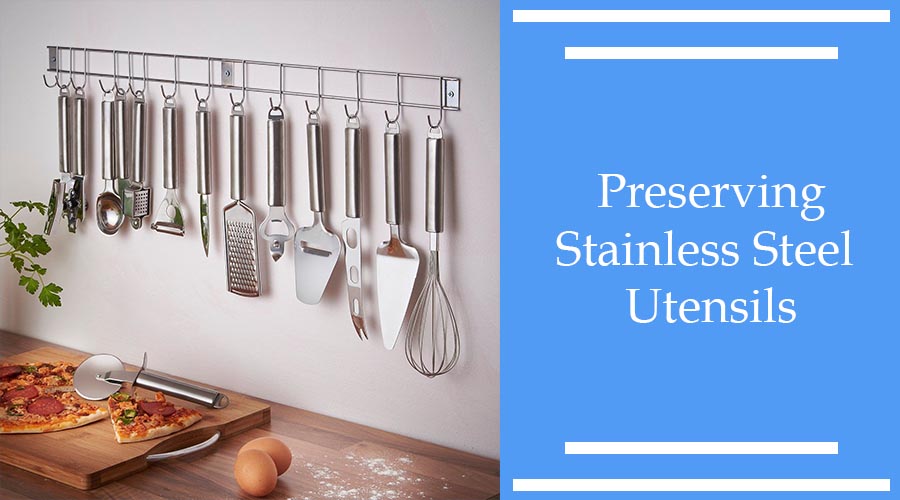Stainless steel has always been the go-to material for kitchen utensils. An alloy made up of steel with an outer layer of chromium for a perfect finish, stainless steel is hardy and handy. It handles heat well, is sturdy and durable, and is microbe resistant to some extent. This makes it an excellent choice for cooking purposes. However, like every other material, it needs some amount of care. Steel is made using iron, which makes it vulnerable to rust if the outer chromium layer is chipped off. Chromium just doesn’t wear off as it oxidizes in surrounding air to produce a hardcover surface that is corrosion and stain resistant. It is external effects that damage the surface, so proper cleaning routine has to be followed to ensure the longevity of stainless steel that its properties promise.
Fortunately, it isn’t that difficult a ritual. Only a few steps have to be kept in mind.
-
Dos:
- Use mild detergent- a wet cloth with a detergent that isn’t very strongly basic is recommended for cleaning stainless steel.
- Move with the grain direction- stainless steel equipment comes with fine texture and finishes with the grains aligned in one direction. While cleaning, moving in the direction of the grain will prevent it from weakening the surface layer and preserve the material longer.
- Baking soda for grease- cooking leaves behind hard grease stains which may not be easily removed with a wipe using detergent and water. Baking soda shines in the removal of difficult stains and isn’t hard on the steel surface. Commercial cleansing creams may be used as well, as long as they aren’t corrosive.
- Dealing with acidic spills- acids can eat away the surface, so any spillage should be wiped off immediately. In fact, it is beneficial to clean immediately after use to avoid dried or baked on surfaces.
- Removing fingerprints- fingers have an oily coating which leaves imprints on the equipment. This can be harmful in the long run, especially for mirror finish utensils that do not react well with oil. A glass cleaner can effectively sort out fingerprint issues.
- Rinsing immediately- rinsing the surface is an essential part of the cleaning ritual. Like acids, detergents can have a corrosive action on the surface too, if they are left for long on the outer layer. So, rinsing well with clean cold water is a must.
- Patting dry- water can be hard or soft. While soft water isn’t a problem, hard water has salts mixed with it that can affect the surface too. So, water spots are best wiped off with a dry cloth.
-
Don’ts:
- Avoid chlorine- while chlorine is a very powerful antibacterial agent, it acts as an oxidizing agent to corrode the chromium surface. So, if any antibacterial agent has to be used at all for cleaning the utensils, ammonia is a suitable replacement.
- Say ‘no’ to coarse sponges- steel wool and Brillo pads need to be avoided at all costs while cleaning stainless steel materials because they scratch the surface and expose the inner rust-prone layers. Instead, go for nylon sponges for hard scrubbing purposes to remove baked-on stains or grease.
- Stay away from cleaners- stainless steel cleaners boast of having effective cleaning power, but that’s only if the equipment is already damaged with inner layers exposed. Since they repair the outer finish and polish, undamaged equipment is best dealt with water and detergent.
A kitchen with shiny polished utensils reflects a happy kitchen and healthy food habits. Following these cleaning habits will take you a long way in protecting your utensils and by extension, your wallet.


